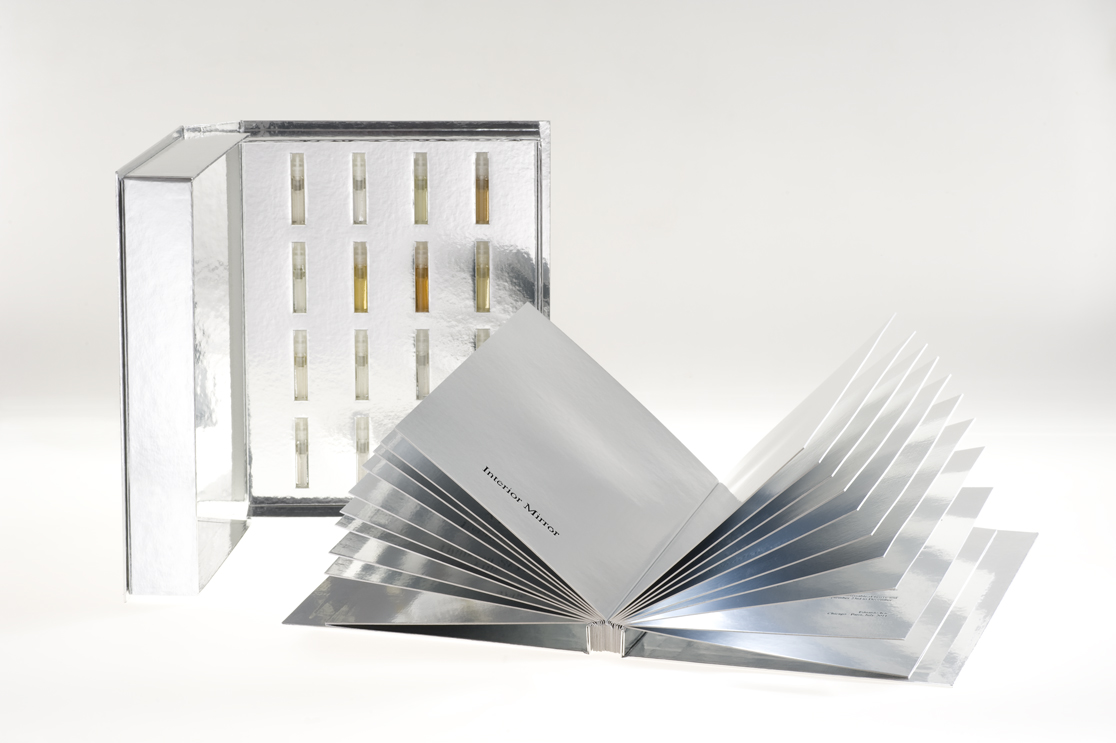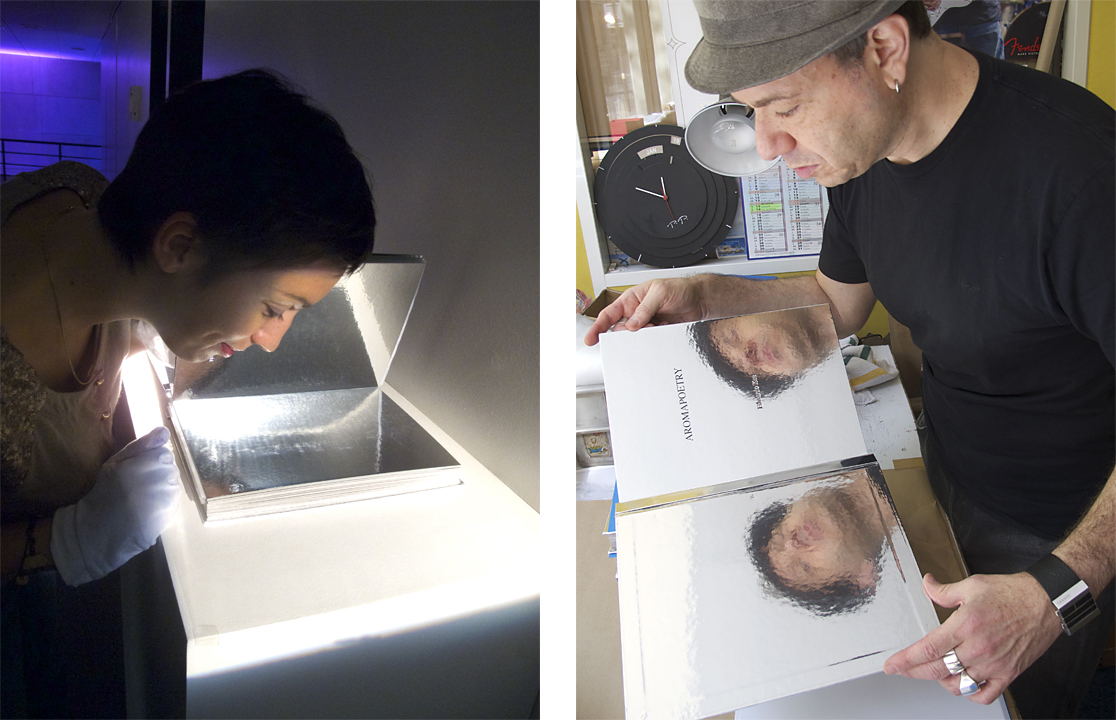Aromapoetry

Eduardo Kac, Aromapoetry (2011), artist's book with box and slipcase, twelve custom-made aromas enmeshed
in a nanolayer of mesoporous glass, letterpress text and graphics, 16 2ml vials with engraved titles,
11.69" x 8.27" x 2" (297 mm x 210 mm x 50.8 mm), edition of 10 signed and numbered by the
artist. Photo: Axel Heise.

Eduardo Kac, Aromapoetry (2011), artist's book with box and slipcase, twelve custom-made aromas enmeshed
in a nanolayer of mesoporous glass, letterpress text and graphics, 16 2ml vials with engraved titles,
11.69" x 8.27" x 2" (297 mm x 210 mm x 50.8 mm), edition of 10 signed and numbered by the
artist.

AROMAPOETRY
Aromapoetry is a new kind of poetry in which the compositional unit (the poem) is made up of smells. The poet "writes" the smells by conceiving the poem as an olfactory experience and then employing multiple chemical procedures to achieve his poetic goals. It goes without saying that, as in any kind of poetry, the reader is an active participant that interprets and thus ascribes his or her own meanings to the poem beyond the writer's original motivations.
In my book Aromapoetry, the first book ever written exclusively with smells, readers find twelve aromapoems that range widely in their material structure and semantic resonance. While I composed some of my aromapoems with only one or two molecules, most of them are composed of dozens of molecules each. In some cases, a single poem has distinct olfactory zones on the page—each comprised of dozens of molecules each. In other words, the level of molecular intricacy of the works in Aromapoetry varies from the very simple to the extremely complex.
I composed the twelve poems in Aromapoetry so as to provide the reader with a broad field of aromatic experiences. The titles simultaneously delineate and open up the semantic sphere of each work. Each poem is a distinct and self-contained composition. At the same time, the book has a dynamic internal rhythm produced through the alternation of different or contrasting smells.
Every poem in the book Aromapoetry employs nanotechnology by binding an extremely thin layer of porous glass (200 nanometers thick) to every page, trapping the odorants (i.e. the volatile molecules) and releasing them very slowly. Without this nanotechnology, the fragrances would quickly dissipate and the smells would no longer be experienced after a few days. To ensure even greater longevity, a set of small bottles is integrated into the book, allowing the reader to recharge every individual page. With an eye to the distant future, the book’s summary presents key molecules used in the production of each poem.
Aromapoetry is a book to be read with the nose.
Eduardo Kac
Video
COLLECTIONS
Private collection, Paris.
Private collection, Paris.
Private collection, Paris.
Black Box collection, Copenhagen.
Private collection, New York.
Private collection, Chicago.
Art Center Nabi, Seoul.
Private collection, Paris.
Private collection, Rio de Janeiro.
Aromapoetry was commissioned by OpenLab, Paris, and Enghien-les-Bains Art Center, and produced with the generous support of Niki Baccile, Margherita Balzerani, and Thierry Azaïs.
EXHIBITION HISTORY
Enghien-les-Bains Art Center, Enghien-les-Bains, France, "Invisible & Insaisissable / Elusive & Invisible" (September 23rd to December 16th, 2011)
ZERO1 Biennial, San Jose, California (September 12th to December 8th, 2012)
Bauhaus-Archiv Museum Für Gestaltung, Berlin, "Sensing the Future" (October 8, 2014 to February 02, 2015)
Poetry Foundation, Chicago, "Poetry and Scent" (December 1 to 30, 2015)